
Belt buckles come in just a few distinct styles. Repairing each style requires a different approach, but all of them can be completed with simple tools and techniques. Because most belt buckles include very few parts, they are relatively easy to diagnose when they break, and their repairs can be performed quickly. Consider the type of buckle that needs repairs, then fix it and give that old belt some new life.
Screw-On Buckles
Check the connection between the belt and the buckle for missing screws. If one or more of these screws are missing, remove the others with the screwdriver.
Separate the buckle from the belt by pulling it off.
Cut the buckle end of the belt with the scissors so that it is square. Remove as little material as possible.
Slip the buckle back onto the cleanly cut belt.
Insert two new screws to the holes on the buckle. Fasten them down with the screwdriver.
Single-Loop Buckles
Cut the threads that fasten the belt to itself near the buckle with the scissors or razor.
Unfold the belt and remove the metal buckle from the belt.
Examine the buckle for damage. Slip each metal loop over the metal shaft that holds it together, if they have become uncoupled. Crimp each connection together with pliers, if necessary.
Braze two pieces of broken metal back together using a torch and flux, if necessary. Secure the two pieces tightly together, with a clamp. Strike the torch, and touch the flux rod to the seam. Apply heat and allow the flux to enter the seam. Cool, holding the two pieces of metal together. Allow the metal to cool completely before handling.
Replace the clasp or pin, if necessary. Cut a piece of clothes hanger wire several inches long. Fold one end of it into a closed loop around the buckle with the pliers. Cut the straight end to size with the cutting edge on the pliers, or with diagonal cutters.
Pass the belt through the center of the buckle and fold it back over itself. Use the pre-formed hole in the belt to hold the clasp, or pin, in place.
Sew the belt back together where the material is doubled over itself.
Related Articles

How to Remove Rivets in Leather
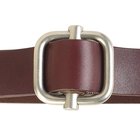
How to Alter a Leather Belt

How to Attach Adjustable Buckles

How to Put a Military Belt On
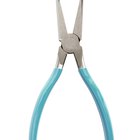
How to Get Studs Off of a Jacket
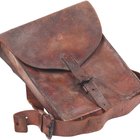
How to Repair Leather Straps

How to Glue a Leather Shoe Strap
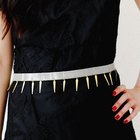
How to Make a Mesh Chain and Charm Belt
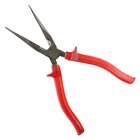
How do I Change the Battery in a Wenger ...

How to Shorten a Nixon Watchband

How to Fix Missing Teeth on a Zipper

How to Fix a Ripped Sweatshirt

How to Fix Cuts in Polyester Clothes

How to Make Tank Tops Out of T-Shirts

How to Repair Cut Leather on Shoes

How to Put on Clip Suspenders

How to Put on Suspenders
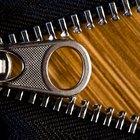
How to Remove and Replace an Old Zipper ...

How to Shorten Bracelet Chains
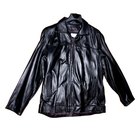
How to Repair Stitching Holes in ...
Writer Bio
First published in 2000, Lewis Levenberg writes for journals and blogs across the country. In addition to extensive experience with construction and renovation, he has worked with academic authors on their social media marketing and in retail. His education includes a Master of Arts in communication, culture and technology from Georgetown University.
Photo Credits
belt buckle image by Edsweb from Fotolia.com